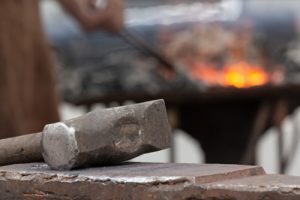 Choosing the Right Heat Treatment Technique: A Guide for Industrial Metal Applications
Choosing the Right Heat Treatment Technique: A Guide for Industrial Metal Applications
Heat treatment is a critical process used in industrial metal applications for enhancing the mechanical properties of metals. The technique involves heating and cooling metals under controlled conditions to achieve the desired material properties such as hardness, toughness, ductility, and machinability. Depending on the application requirements, different heat treatment techniques are used to achieve specific material properties. In this blog, we’ll discuss the various heat treatment techniques for industrial metal applications and how to choose the right technique.
1. Annealing
Annealing is a heat treatment process used to soften metals and improve their ductility, machinability, and toughness. It involves heating the metal to a specific temperature and holding it there for a set period. The metal is then slowly cooled down to room temperature. Annealing is typically used for metals with high carbon content such as tool steel, or metals that require further processing.
2. Normalizing
Normalizing is a heat treatment technique used to improve the toughness and machinability of metals. It is similar to annealing, but the metal is cooled down in air, rather than slowly cooled in a furnace. Normalizing is commonly used for low-alloy steels to improve their strength and toughness.
3. Quenching
Quenching is a heat treatment process where the metal is heated to a high temperature and then rapidly cooled to room temperature using a quenching medium such as water, oil, or salt. This technique hardens the metal, making it less ductile but more brittle. Quenching is commonly used to harden metals such as steel, and tool steel.
4. Tempering
Tempering is a heat treatment technique that involves heating quenched metals to a lower temperature, then slowly cooling them down to room temperature. This process reduces the brittleness of the metal, improves its toughness, and increases its ductility. Tempering is typically used after quenching to achieve a balance between hardness and toughness.
5. Case Hardening
Case hardening is a heat treatment technique where the surface of the metal is hardened while maintaining a tough and ductile core. It involves introducing carbon or nitrogen to the surface of the metal in a controlled environment such as a gas or liquid. This technique is typically used for low-carbon steels and is commonly used in the automotive and aerospace industries.
6. Austempering
Austempering is a heat treatment technique that involves heating the metal to a specific temperature and holding it there for a set period, then rapidly cooling it down in a bath of molten salt or oil. This process results in a metal that is less brittle and more ductile than quenched and tempered metals. Austempering is commonly used for high-strength steels used in the automotive and aerospace industries.
Choosing the Right Heat Treatment Technique
Choosing the right heat treatment technique depends on the specific application requirements of the metal. The following factors should be considered when selecting the appropriate heat treatment technique:
1. Material Composition
The composition of the metal is a crucial factor in determining the appropriate heat treatment technique. Each technique has specific requirements when it comes to the composition of the metal. For example, austempering is ideal for high-strength steels, while case hardening is best suited for low-carbon steels.
2. Mechanical Properties Required
The mechanical properties required for the application also play a key role in selecting the right heat treatment technique. Hardening is preferred if the metal needs to be tough with high wear resistance. On the other hand, tempering is the best option when a balance of toughness and hardness is required.
3. Part Size and Shape
The size and shape of the component to be treated also determine the appropriate heat treatment technique. For example, small and thin components are not suited to quenching due to the risk of warping, which might cause distortion and damage to the part.
4. Heat Treatment Equipment Available
Heat treatment equipment, such as the furnace, quenching tanks, and so on, is also essential when selecting a heat treatment technique. The equipment needs to be compatible with the specific heat treatment process to yield desirable results.
5. Cost
Cost is also a crucial consideration when choosing heat treatment techniques. Some techniques, such as case hardening, are more expensive due to the cost of the gases or liquids used in the process.
Conclusion
Choosing the right heat treatment technique for industrial metal applications is essential for achieving the desired mechanical properties of metals. The choice of technique depends on several factors such as material composition, mechanical properties required, part size and shape, heat treatment equipment available, and cost. Consider all these factors before selecting the appropriate heat treatment technique to ensure that your metals meet the desired specifications. Additionally, you should consider getting in touch with a qualified heat treating service provider as professionals can ensure the best results.
